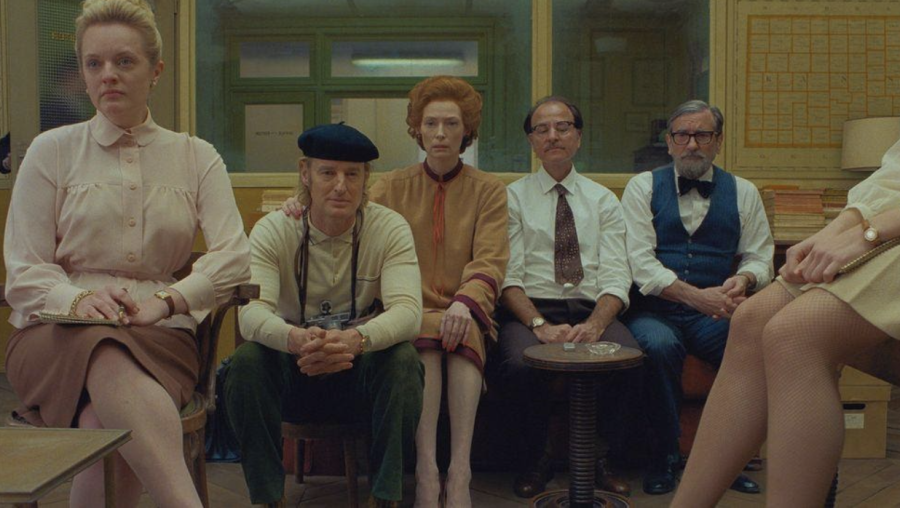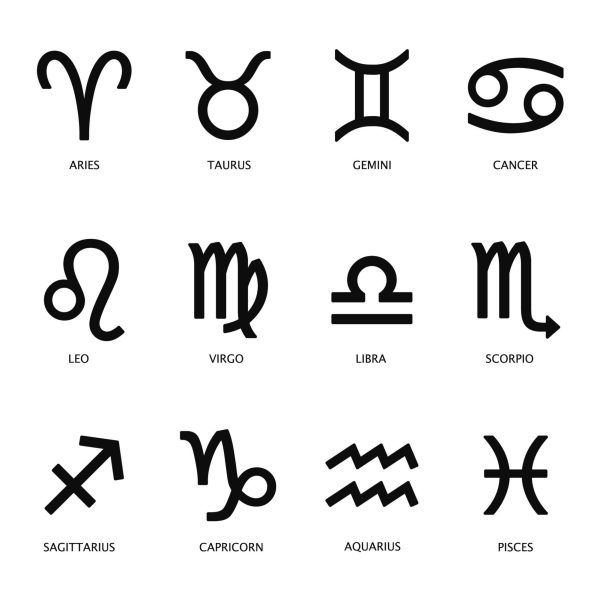Wes Anderson’s French Dispatch Movie Review
Courtesy of BBC/20th Century Studios/TFD Productions
Anderson’s new film has an all-star cast and did not disappoint.
November 3, 2021
As of last week, I had never seen a Wes Anderson film before.
Crazy, right? Upon hearing this, most cinephiles would have asked me to turn in my movie-lover card.
“The French Dispatch” was my first foray into the world of Wes Anderson, a film director famous for his distinctive color palettes, symmetrical shots and offbeat humor.
The film premiered at Cannes Film Festival back in July and had its wide theatrical release on Friday, Oct. 29. It features an all-star cast that includes Bill Murray, Owen Wilson, Tilda Swinton, Timothee Chalamet and many others.
If I had to describe “The French Dispatch” in one word, it would be charming.
The film transports you into a beautiful world. The movie is consistently aesthetically pleasing that at any moment, you could pause it, and that frame would look like an award-winning photograph. Some of the shots of the town were actually filmed on-location in France, while some are clearly still-lifes.
The look of “The French Dispatch” is complemented by charming sounds. The film was scored by Alexandre Desplat, and has a nervous energy that, when paired with utterly silly scenarios, adds to the comic nature of the film.
The film takes place in the fictional, humorously-named town of Ennui-sur-Blasé, a quintessentially French village (at least in the American imagination). There, a Kansas-based newspaper has an international outpost (the eponymous French Dispatch) filled with reporters on the prowl to report on different bizarre stories. Three of these stories make up the three main parts of this film.
The film is laid out as if you’re reading a newspaper, with the title of each part serving as an article headline.
The first part of “The French Dispatch” is called “The Concrete Masterpiece, by J.K.L. Berensen.” This part follows the life of the imprisoned, mentally-disturbed painter Moses Rosenthaler as he becomes an international art sensation.
Tilda Swinton gave an unexpectedly humorous performance as the reporter J.K.L. Berenson in this part. Those who are used to Swinton’s serious and regal demeanor in the “Doctor Strange” and “The Chronicles of Narnia” franchises will have their expectations of her character totally upended.
In general, the humor in this film manages to avoid both dryness and obviousness. The humor is clever, and it only works because of Anderson’s excellent timing. He knows what to reveal, when to reveal it and how to reveal it. This is a skill that not enough filmmakers have.
The second part of “The French Dispatch” is called “Revisions to a Manifesto, by Lucinda Krementz.” This part follows reporter Lucinda Krementz as she covers a student protest movement, fighting for the right of male students to enter female dormitories.
Timothée Chalamet gives a hilarious performance as Zeffirelli, the leader of this student movement and author of the movement’s manifesto. Through his awkwardness, Chalamet helps elevate this part to be the best one of the film.
While not explicitly stated to take place in the 1960s, “Revisions to a Manifesto” is replete with references to the French New Wave, the May 1968 student protest movement and other iconic elements of 1960s France. Anderson shows tremendous attention to detail. In one scene on Ennui-sur-Blasé’s main street, a shop in the background is named “Masculin Feminin” after the iconic French New Wave film. This blink-if-you-miss-it moment is probably unnoticed and unimportant to most viewers, but it is evidence of Anderson’s meticulousness and deep appreciation for cinema.
The final part of “The French Dispatch” is called “The Private Dining Room of the Police Commissioner, by Roebuck Wright.” It follows reporter Roebuck Wright having dinner with the police commissioner of Ennui-sur-Blasé, when all of a sudden, chaos ensues. While amusing at times, it is the weakest part of the film. The characters in this part are bland. Whether this is the fault of subpar acting or subpar writing is unclear.
Also, this part contains an animated car chase sequence that left a bad taste in my mouth. I typically enjoy animation interspersed with live action scenes in films. However, in this case, there was no clear reason for the scene to be animated. It felt as if all of a sudden the film tightened its budget and at the last minute had to resort to animation.
A recurring theme throughout “The French Dispatch” is the mockery of the pretentious. In “The Concrete Masterpiece,” we laugh at the pompous art world. In “Revisions to a Manifesto,” we laugh at the pseudo-philosophical conversations of naive, hormonal student revolutionaries. And throughout it all, we laugh at the unbridled persistence of the journalists covering these stories.
Some critics complained that in “The French Dispatch,” Anderson merely repeated his old tricks. As a new viewer of his, I’m unable to testify to the veracity of that criticism. But what I can say is that “The French Dispatch” stands on its own. One doesn’t need any prior viewing experience of Anderson whatsoever to enjoy it. More importantly, this film was impressive enough to inspire me to start watching the rest of Anderson’s filmography.
All in all, if you want to watch an entertaining, light-hearted comedy that is not low-brow, “The French Dispatch” will not disappoint.













